Application of the scheme to the sceleton
of Afghan Hounds out of four books: |
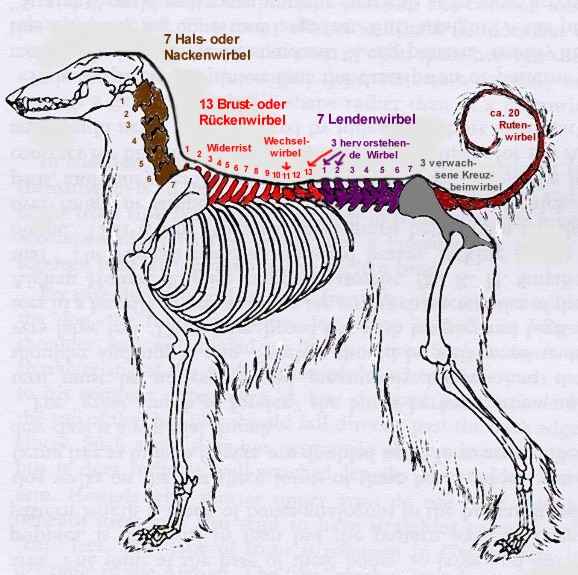
|
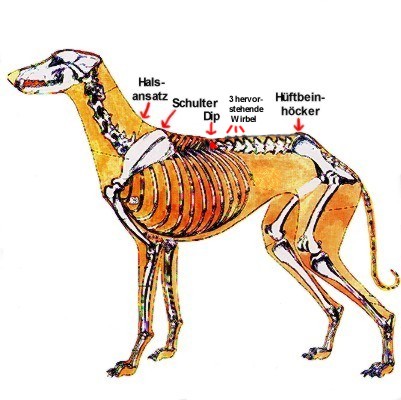
original from: Lynda Race, Afghan Hounds |

original from: Miller, The Complete Afghan Hound |

original from: Aldington, Vom Körperbau des Hundes |
Applied on a real sceleton: (out
of Seiferle, Anatomie der Haustiere) |
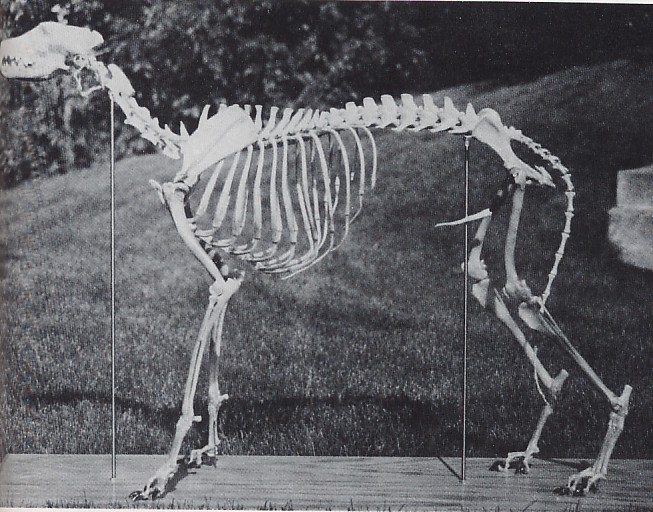
Sighthound sceleton (Saluki)
The pictured Sighthound sceleton was posed with the pelvis far too high.
Before I can draw an Afghan Hound topline over the sceleton I have to change
some details of the spine column like following:
- the whole spinal column lowering 8 degrees to give the wrongly
sloping downwards vertebrae a level position (higher than
loin)
- slight straightening of the too much bent loin part of the column
- correct scapula and more upward posture of the neck vertebrae. |
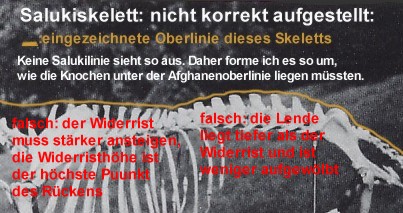
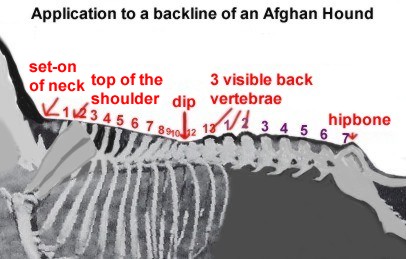
|
| Ich erlaube mir diese Angleichungen aus folgendem Grund:
Die Positionierung der Knochen ist nicht fest vorgegeben. Das ganze, bewegliche
Knochengefüge wird von Muskeln, Sehnen und Bändern zusammen gehalten
und von diesen bewegt. Es gibt keine "richtige" Lage der beweglichen Teile
zueinander. Es bleibt dem Präparator überlassen, wie er das Skelett
aufstellt. Für meinen Zweck die Knochen, die unter dem Fell verborgen
liegen, sichtbar zu machen, benötige ich die Knochen dort, wo sie
in dem Fotobeispiel nun mal liegen, und diese Lage ist abhängig davon,
wie der Hund sich hinstellt. Gerade für Fotos werden Hunde oft unnatürlich
und künstlich "aufgebaut". Um dennoch die Lage der Knochen nachvollziehen
zu können, muss ich das starre Skelett "bewegen" dürfen. |
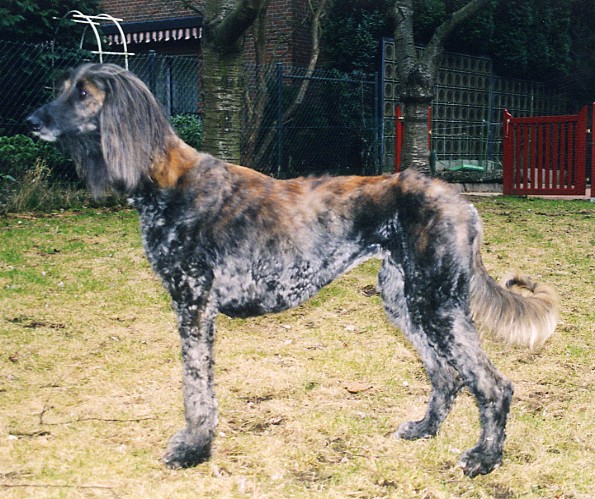
Clipped down Afghan Hound resembling more Saluki than Afghan.
Ideally she should have a more slope of the shoulder with the top of the
shoulder blade more moving backwards along the withers,
and more return of upper arm moving the leg more under the chest.
|
Applying the above scheme to one of my own
Afghan Hounds:
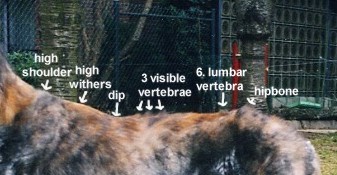
You see almost the same backline as the Saluki sceleton above,
hence this Afghan Hound bitch shows a Saluki like topline (left).
I want to add one note about shoulder placement, though the placement of
the shoulder isn't part of this webpage about spines:
because of her too steep shoulder the top of the shoulder blade has moved
far too much forward. Together with steep upper arm she shows a steep front
angulation too much in front of the dog,
causing a so called forward placed front assembly with the
elbow placed to much forward of the deepest point of the chest.
But the standard demands for a well laid back shoulders with plenty angulation
placing the foreleg under the dog. |
Application on the four backline of the
top of this page: |
| Really straight back from shoulders to hipbones - then
anatomically the thoracic spine falls away at the dip: |
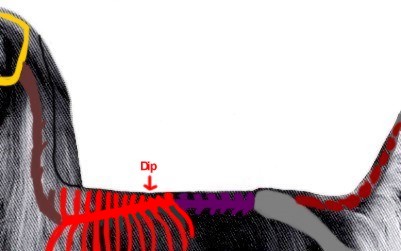
|
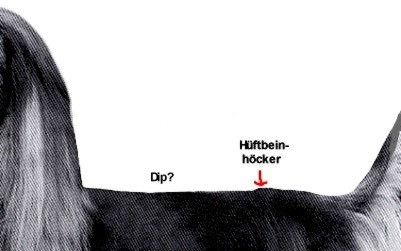
|
.
Straight back with pronounced withers - only then the whole spine is almost
level anatomically: |
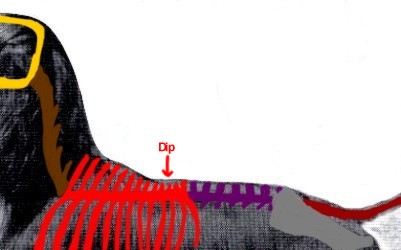
|
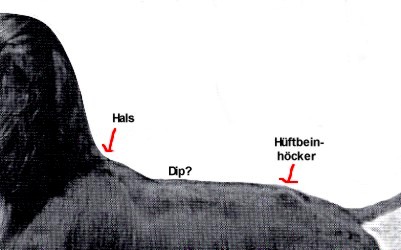
|
.
Divided back line with the dip in the middle - then anatomically the spine
rises in the dip: |
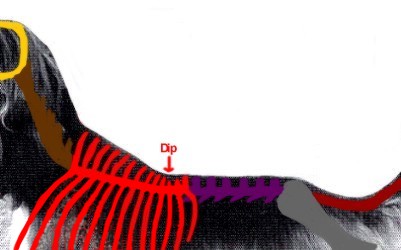
|
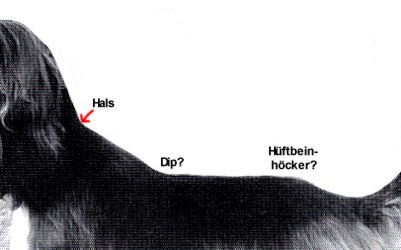
|
.
In extreme the flexibility of the thoracic vertebrae can cause the illsuion
that the withers are part of the neck line: |
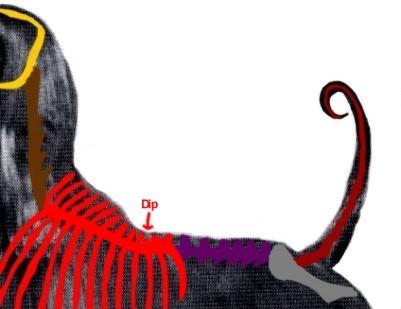
|
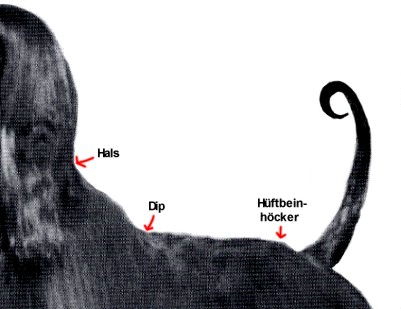
|
Application on a common back line with
distinctly visible vertebrae: |
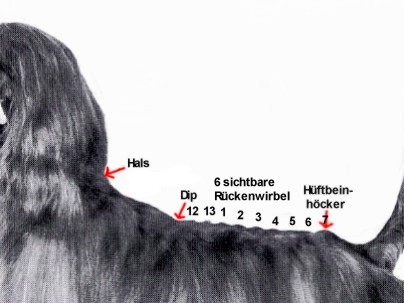
|
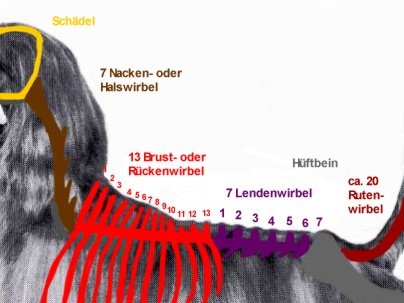
|
Both photographs show the thorns of the back vertabrae
beginning with the 12. thoracic vertabra to the 6. loin vertebra.
(Ther 7. loin vertebra lays between the hip bones of the pelvis and is
therefore hidden for the eye from this side view.)
The first pictures gives the impression that you could lay a lineal on
the back: minimal bent, almost straight.
The second photo shows a slight bent in the loin, which is the natural
state and how it should be.
The stack of the rear extremely drawn back can influence (and straighten)
the loin as like the how comfortable the dog feels.
The nature of the spinal column is its flexibility. A photo is a shot
fixing ONE possible position, not more.
|
below: further trys to draw the spinal
column:
|
|
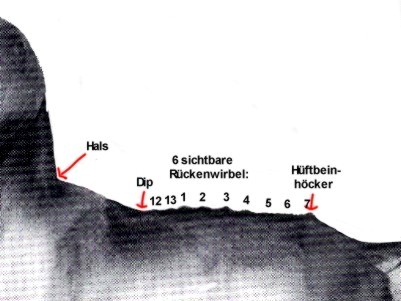
|
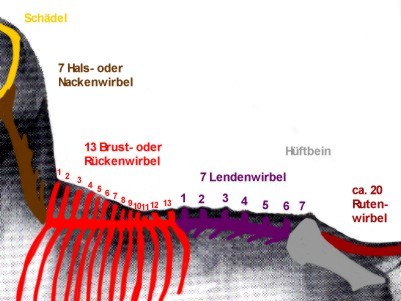
|
| Much Afghans show a backline more or less like this schematic
presentation. |
Musculation attached to the spinal column: |
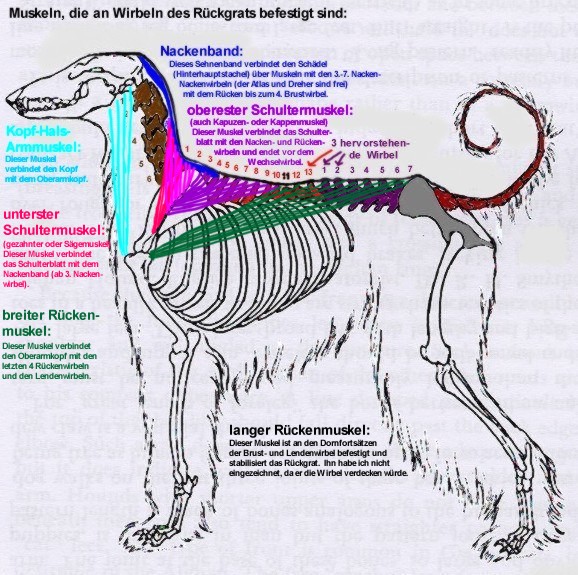 not finished
not finished |
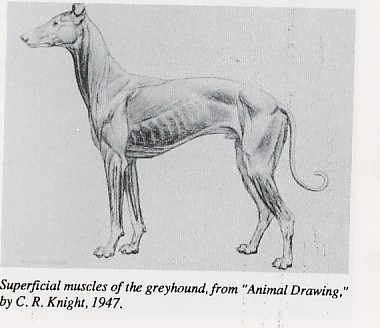
Zum Detailstudium der Muskulatur drei Abbildungen
bezüglich des Greyhounds aus "Gazehounds".
|

|

|